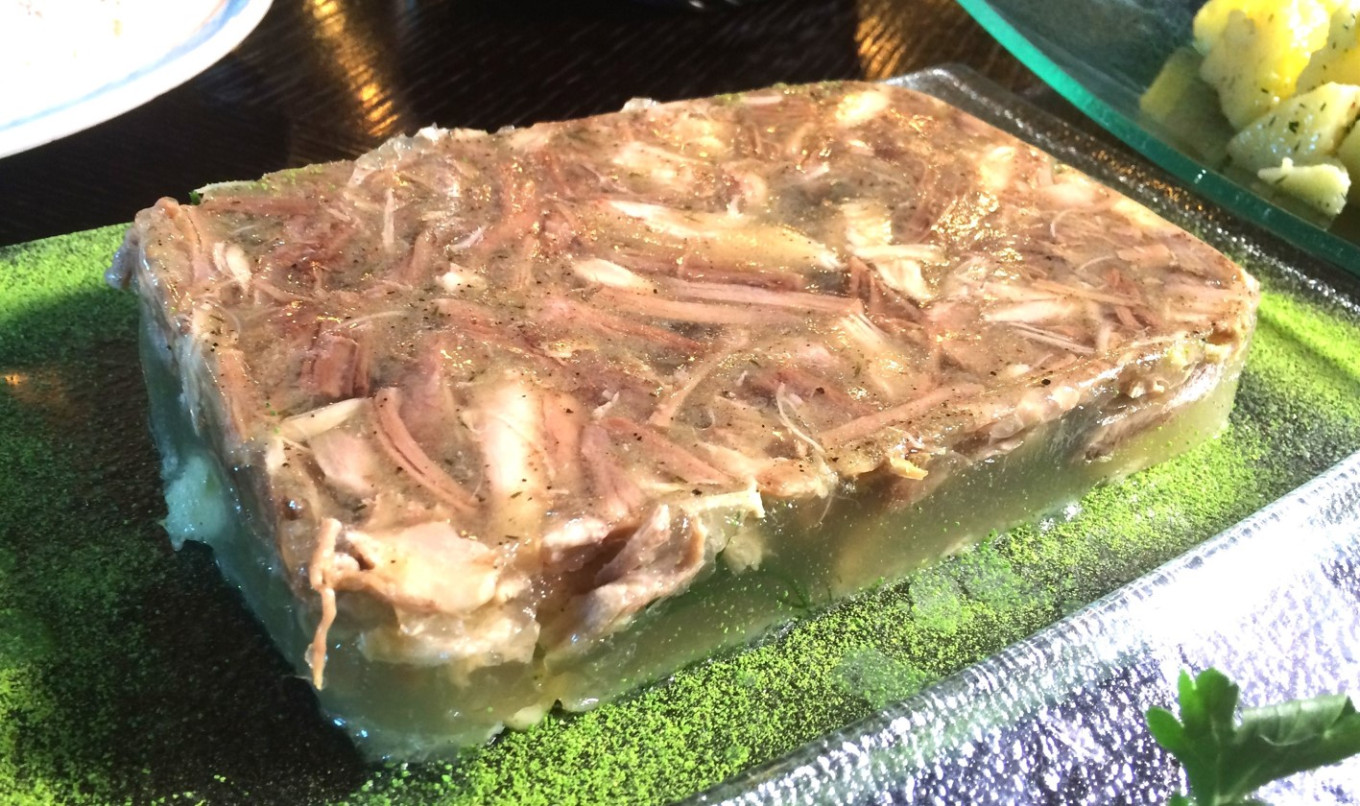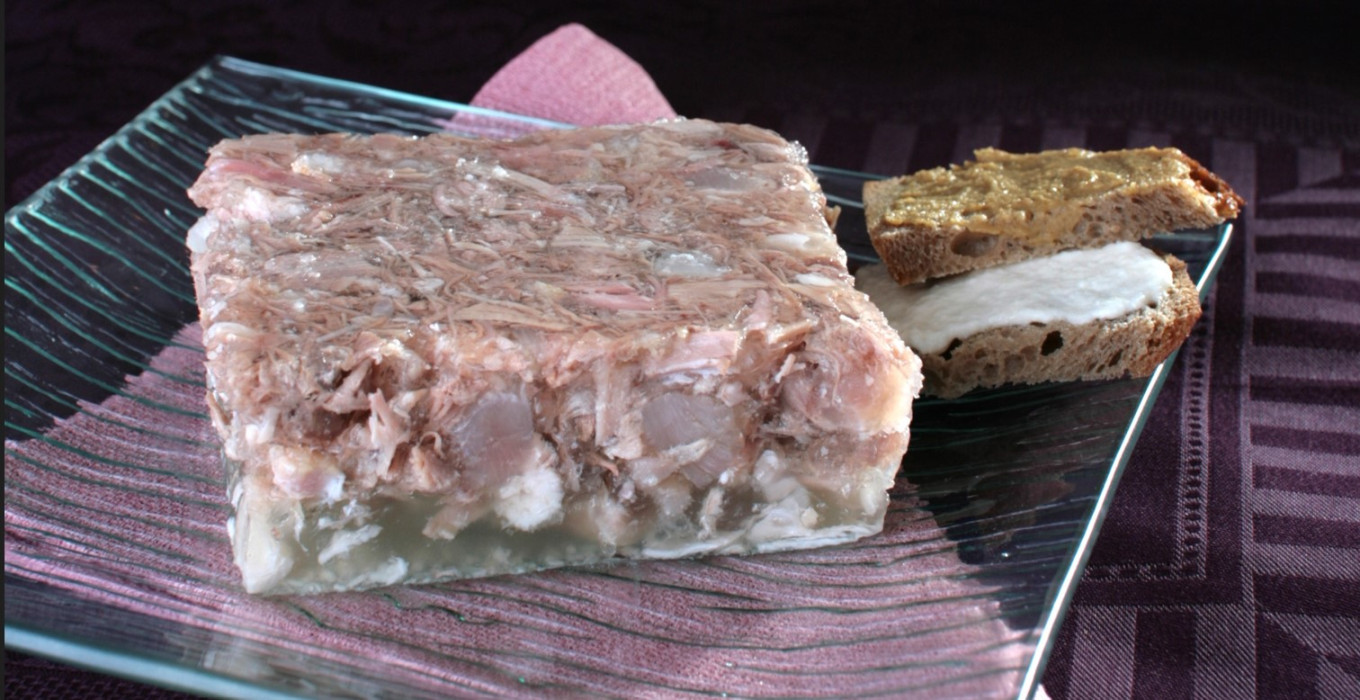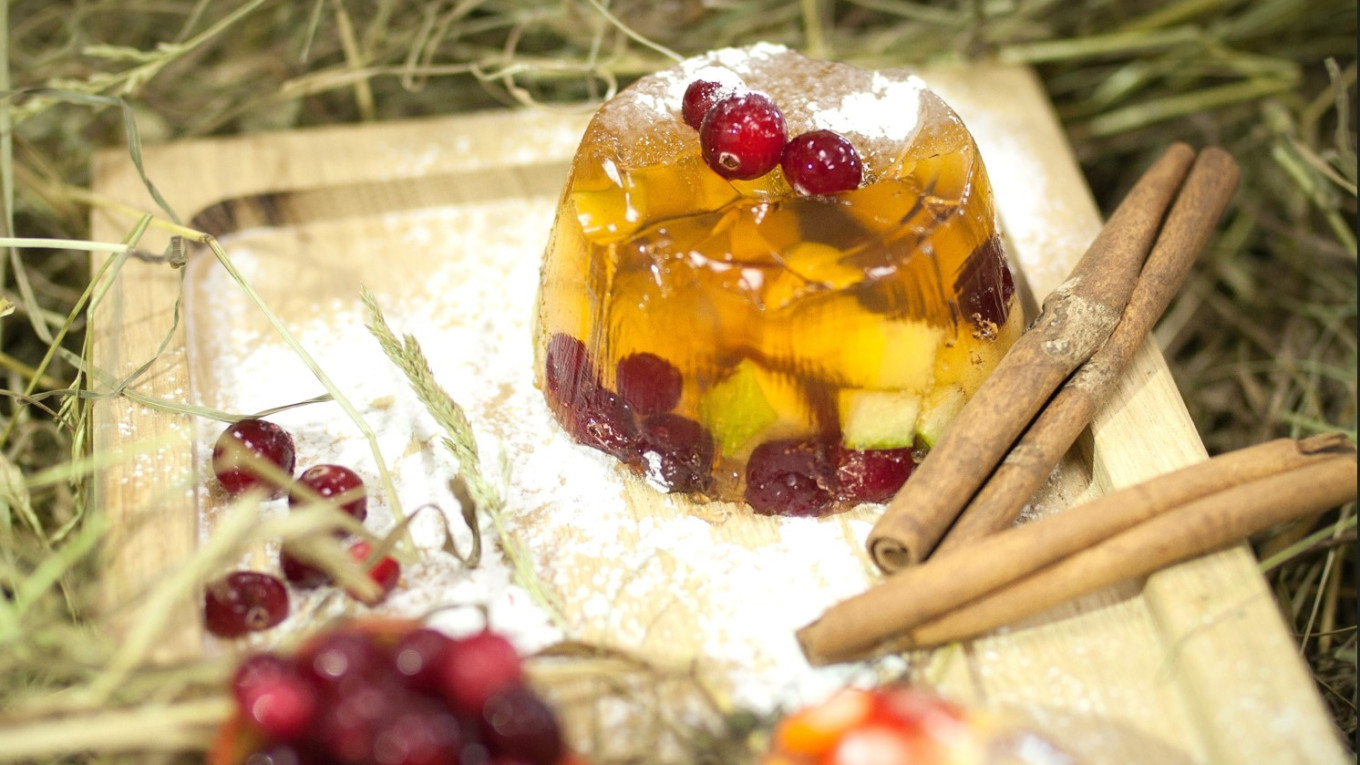Russian cuisine has several jellied meat or fish dishes — studen, kholodets, aspic, galantine — that people tend to confuse. It’s no wonder. In Russia there are many similar dishes with different names. But is it a mistake to consider all of these related?
Studen is rarely seen in Russian restaurants today. This is a very simple dish, usually homemade: a jelly made of broth with chunks or shredded pieces of meat. The recipe really hasn’t changed in centuries.
When and where this dish was "invented" is impossible to say. Similar dishes existed in the culinary cultures of many nations long ago. This is understandable. People have always tried to use every part of an animal, to get everything possible out of it. By-products, heads and hooves were used for cooking and boiled. The discovery that rich broth and pieces of meat gelled together was very welcome in Russia's cold climate.
Jellied broths are not just found in Russia. Germany, Georgia and Armenia have their own versions. They also eat aspics in France. In the north in Normandy tripes à la mode de Caen is popular — tripes in an aspic made of veal shanks.
Studen is not a fancy dish, but something for the everyday table. In the Middle Ages in Russia it was served both in the peasant's hut and at the high boyars' table. Later it was replaced by a more elegant dish in aristocratic cuisine.

But studen meant different dishes to different cooks in the past. For some, it was the entire dish: “Tripe, lips and calves’ feet can go into studen all year round,” wrote the author of the "Domostroi" in the mid-16th century. But Vladimir Dahl's dictionary defines it another way: “Studen is gelled beef or fish bouillon. Cooks put shredded meat or fish in the studen to make aspics.”
So aspics were almost synonymous with studen. But by the middle of the 19th century, aspics became more elegant and were associated with the cuisine of the capital. "Platon Andreyevich described a fricassée in aspic served to him ten years ago at a Moscow tavern," Russian writer Andrei Vitkovsky wrote in 1860.
Curiously enough, in the past it was customary to eat studen in an unusual way. For example, the description of a dinner party at a well-to-do Moscow house in the late 18th century includes this dish: "Beef studen with kvas, sour cream and horseradish.” Do you think they drank kvas with the dish? Not at all. Studen was placed in a dish and garnished with herbs and green onion. Then kvas was poured over it, topped with horseradish and sour cream. The studen was partially dissolved in kvas, and little pieces of it could be eaten with a spoon, like a cold soup. Interestingly, the dish survived into Soviet times. It was still quite recently cooked in villages, for example, in the Vladimir region.
But let's go back a couple of centuries. At the end of the 18th and beginning of the 19th century, the new “Frenchified” cuisine was gaining popularity, and many foreign chefs came to Russia. They tried to adapt the old studen to the new, more refined tastes. The cooks lightened the color the broth and made it clear using egg whites and even black caviar. These ingredients absorbed the substances which clouded the broth. And so studen was transformed into a dish called galantine (from the French gelatin). Elegantly sliced carrots, eggs and meat or fish were added to it. Gerasim Stepanov, a famous culinary specialist of the mid-19th century, added a boned piglet.

Fish in aspic is a rather elegant dish. In the past it was only made with river fish — pike-perch, sturgeon (beluga, sterlet) — because these fish are rich in collagen, which makes the bouillon gel. During the Soviet period cooks tried to use saltwater fish for their aspics, but even professionals didn’t know how to prepare it properly. And home cooks usually made a mess of it, which was the inspiration for the famous phrase uttered by one of the characters in the cult movie "The Irony of Fate”: "Your jellied fish is disgusting.”
But the term kholodets did not mean what it means today. Even in the middle of the 19th century it was a sweet dish: fruit in jelly or in a cold sweet soup. Yelena Molokhovets gave this recipe in her “Gift to Young Housewives”: Take ¾ garnet (9 cups) of berries (raspberries, strawberries, currants), press them through a sieve, mix with ¾ pound (300 g) of sugar, and 6 cups of cream, put on ice, serve with cakes or biscuits.

Apple Aspic
Updated to suit today's tastes, this recipe is not difficult, and the result has amazing flavor. In addition to apples, you will need lemon juice, currant juice, apple juice and granulated sugar. Gelatin is not needed, since apples themselves contain a thickener called pectin. By the way, this is why it is better to use green and sour fruit — they have more pectin.
Ingredients
- 400 g (14 oz) apples
- 700 ml (3 c) water
- 60 ml (1/4 c) lemon juice
- 60 ml (1/4 c) currant juice
- 200 ml (3/4 c and 1 Tbsp) apple juice
- 200 g (1 c) sugar
- Cinnamon stick
Instructions
- Cook the apples in the water with cinnamon to taste for about 30 minutes. The apples should dissolve completely.
- Purée the apples in a blender and then press through a sieve to remove the bits of peel. Pour the purée into a saucepan.
- Add the lemon juice to the strained juice, then the same amount of currant juice and then the apple juice. Add the sugar.
- Cook the mixture for 5 minutes.
- Return the pot to the stove and cook for 5 minutes. Then pour into molds, cool and put in the refrigerator. The jelly can be decorated with pieces of fruit.
A Message from The Moscow Times:
Dear readers,
We are facing unprecedented challenges. Russia's Prosecutor General's Office has designated The Moscow Times as an "undesirable" organization, criminalizing our work and putting our staff at risk of prosecution. This follows our earlier unjust labeling as a "foreign agent."
These actions are direct attempts to silence independent journalism in Russia. The authorities claim our work "discredits the decisions of the Russian leadership." We see things differently: we strive to provide accurate, unbiased reporting on Russia.
We, the journalists of The Moscow Times, refuse to be silenced. But to continue our work, we need your help.
Your support, no matter how small, makes a world of difference. If you can, please support us monthly starting from just $2. It's quick to set up, and every contribution makes a significant impact.
By supporting The Moscow Times, you're defending open, independent journalism in the face of repression. Thank you for standing with us.
Remind me later.







